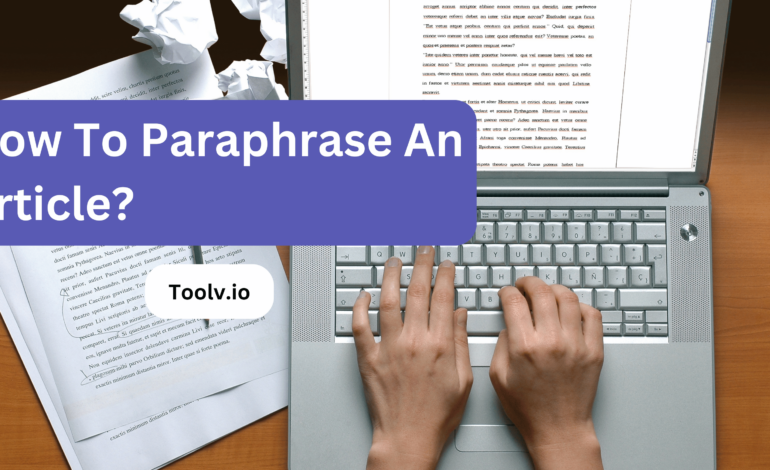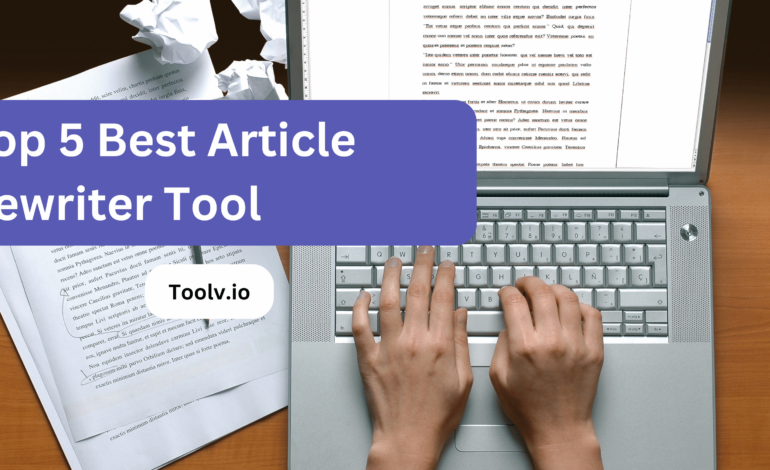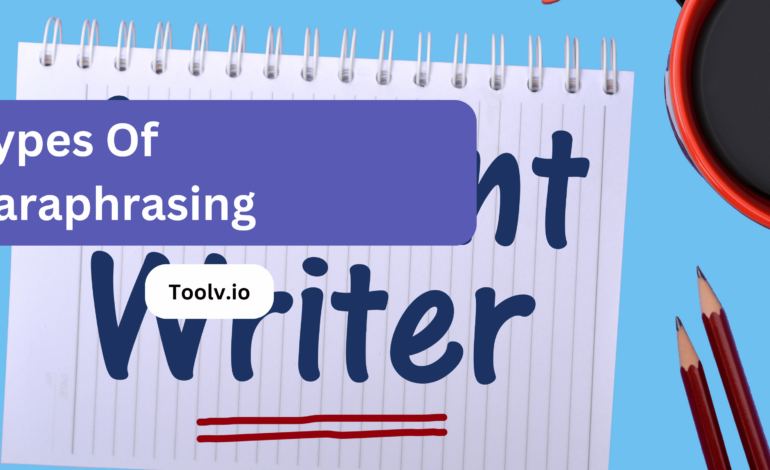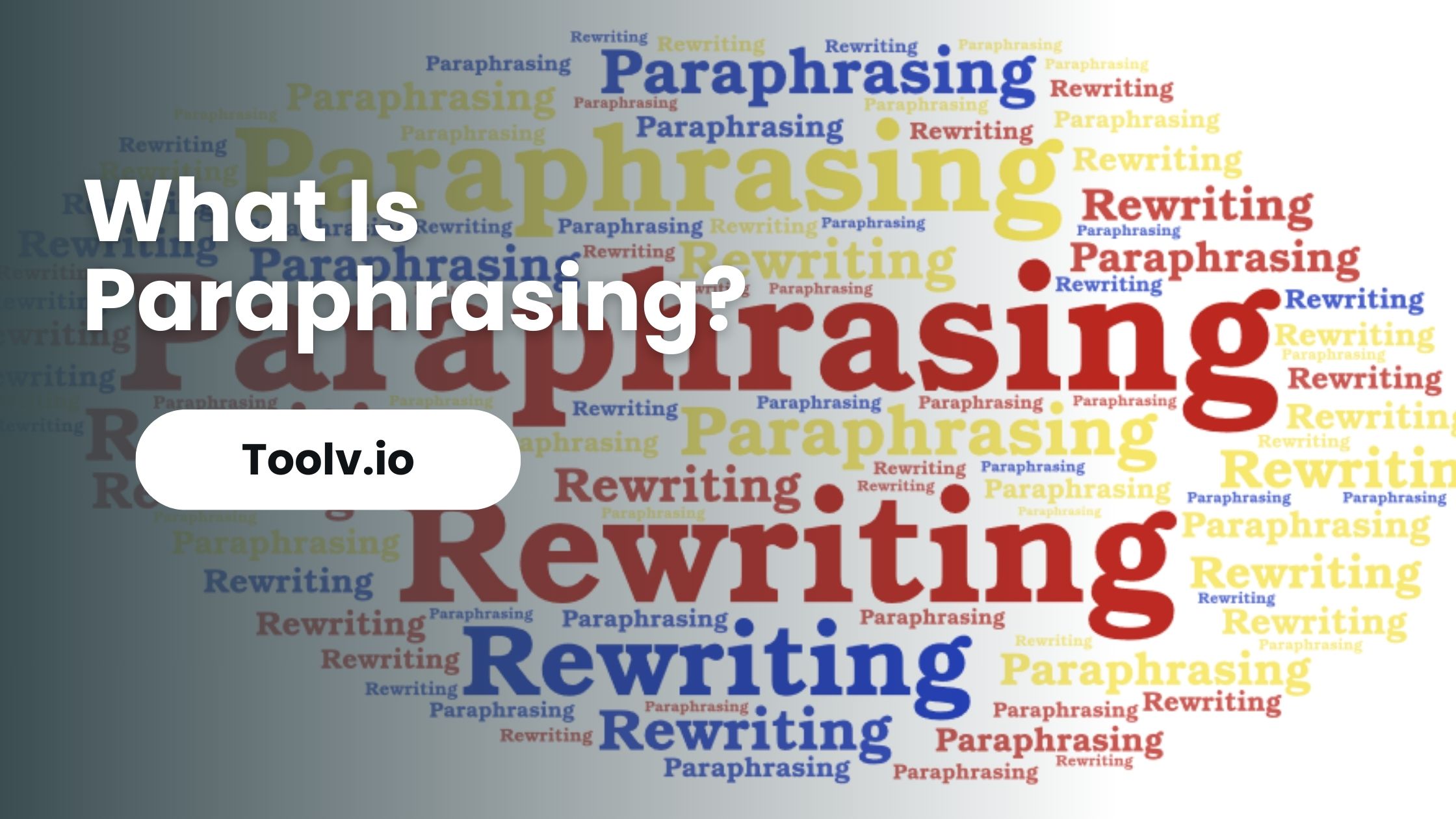How To Paraphrase An Article?

Paraphrasing an article means rewording it in your own words while keeping the original meaning intact. It’s a skill that allows you to understand and convey information in a new way, making it easier for different audiences to grasp.
In this article, we will discuss the steps and strategies for effectively paraphrasing an article. We’ll cover how to read for understanding, use synonyms wisely, and change the sentence structure without losing the article’s original message.
Why Paraphrase An Article?
Paraphrasing an article is about rewriting it in your own words. It’s useful because it lets you share the original idea without copying it exactly. This makes your work original and avoids any trouble with copying others.
When you paraphrase, you also get to understand the content better. By putting it in your own words, you make sure you really get what it’s saying. This can help you learn new things and remember them better.
Also, paraphrasing lets you fit the article into your own work smoothly. You can take the main points and explain them in a way that matches your style. This makes your writing more interesting and personal.
Benefits of Paraphrase An Article
- Improves Understanding: Paraphrasing forces you to process and understand the material deeply, as you have to restate the concepts in your own words.
- Enhances Writing Skills: It helps you develop your writing style and proficiency by encouraging you to find new ways to express ideas.
- Avoids Plagiarism: By paraphrasing correctly and citing sources, you can use information from other works without plagiarizing.
- Clarifies Original Text: Paraphrasing can make complex information more understandable and accessible to different audiences.
- Promotes Critical Thinking: The process requires you to critically evaluate the original text’s meaning and decide how best to convey it in your own words.
- Increases Engagement: Rewriting content in a new way can make it more engaging and relevant to your readers.
- Supports Research: Paraphrasing allows you to succinctly include various viewpoints and research findings in your work without over-relying on direct quotes.
- Preserves Original Meaning: It enables you to capture the essence of the original text while adapting the language and style to suit your purpose.
- Facilitates Note-Taking: Effective paraphrasing is crucial for efficient note-taking, helping you summarize and remember key points from lectures or readings.
- Improves SEO: For digital content creators, paraphrasing can help avoid duplicate content issues, improving search engine optimization (SEO).
- Tailors Content to Audience: It allows you to adjust the tone, complexity, and style of the original text to better fit your target audience’s preferences.
How To Paraphrase An Article?
1. Read the Original Article Thoroughly
First, read the entire article carefully to understand the main ideas, the supporting details, and the author’s intent. It’s important to grasp the overall message before you start paraphrasing.
2. Identify Key Points
After reading, identify the key points and concepts in the article. Make notes on these points in your own words. This helps to ensure you’ve understood the content and can express it from your own perspective.
3. Start with a Section or Paragraph
Begin by paraphrasing a small section or paragraph. Try to express the original idea using different words and sentence structures. Avoid looking at the original text while doing this to ensure your version is truly in your own words.
4. Use Synonyms Wisely
Where appropriate, use synonyms to replace words from the original text. However, be careful with word choice to ensure the synonyms fit the context and maintain the original meaning.
5. Change the Sentence Structure
Altering the structure of sentences is key to effective paraphrasing. If the original sentence is passive, consider changing it to an active voice, and vice versa. Break long sentences into shorter ones, or combine short sentences for variety.
6. Compare with the Original
Once you’ve paraphrased a section, compare your version with the original to ensure you’ve accurately conveyed the key points without copying the wording. Adjust as necessary to improve clarity or accuracy.
7. Check for Plagiarism
After paraphrasing the entire article, use plagiarism checkers to ensure your version is sufficiently different from the original. This step is crucial for academic and professional work to avoid unintentional plagiarism.
8. Revise and Refine
Finally, revise your paraphrased article for flow, coherence, and readability. Ensure it stands as an independent piece of writing that effectively communicates the original ideas in a new form.
Key Tips To Paraphrase An Article
- Maintain the original meaning: Ensure your paraphrased text accurately reflects the original ideas and facts.
- Add your own interpretation: Where appropriate, include your interpretation or analysis to enhance understanding.
- Attribute sources: Even when paraphrasing, it’s important to credit the original author or source, especially for specific facts or quotes.
Paraphrasing is not just about changing words; it’s about rethinking and restating the original content in a way that is original, clear, and effective.
With practice, you can develop the ability to paraphrase effectively, making it a valuable tool for writing, studying, and communicating ideas.
FAQs
What is paraphrasing?
Paraphrasing involves restating information from a source using different words while maintaining the original meaning.
Why is paraphrasing important?
Paraphrasing helps avoid plagiarism by expressing ideas in your own words while still crediting the original source.
How do I paraphrase effectively?
Read the passage carefully, understand the main points, and then rewrite it in your own words without looking at the original text.
How can I ensure my paraphrase is accurate?
Compare your paraphrase with the original text to ensure accuracy, and cite the original source to give proper credit.
Conclusion
Paraphrasing an article helps you rewrite content in new words while keeping the original meaning. It’s a useful skill for making information fit better in your own work, avoiding plagiarism, and understanding material more deeply.
The Toolv.io paraphrasing tool is a handy online helper for this task. It uses AI to change words and sentence structures, making rewriting easier. Just paste your text, and it gives you a new version quickly. This tool is great for students, writers, and anyone needing to refresh content without changing the message.





